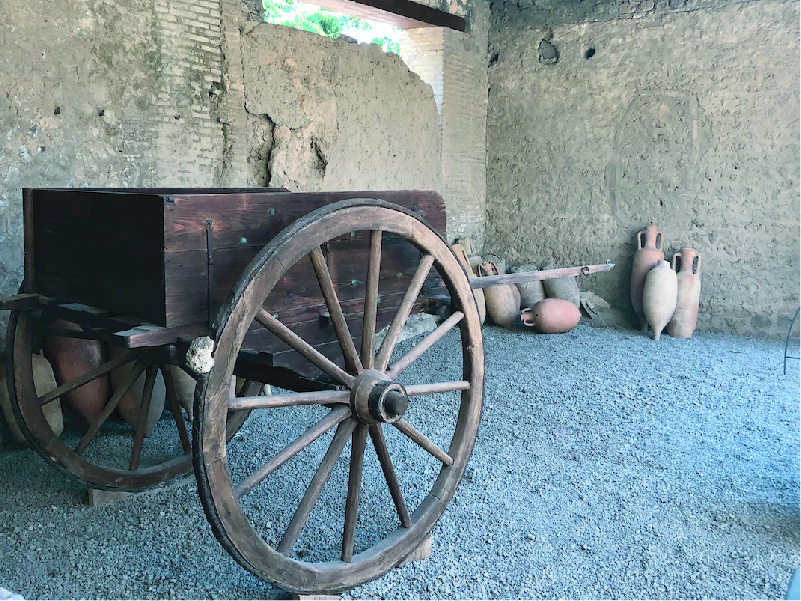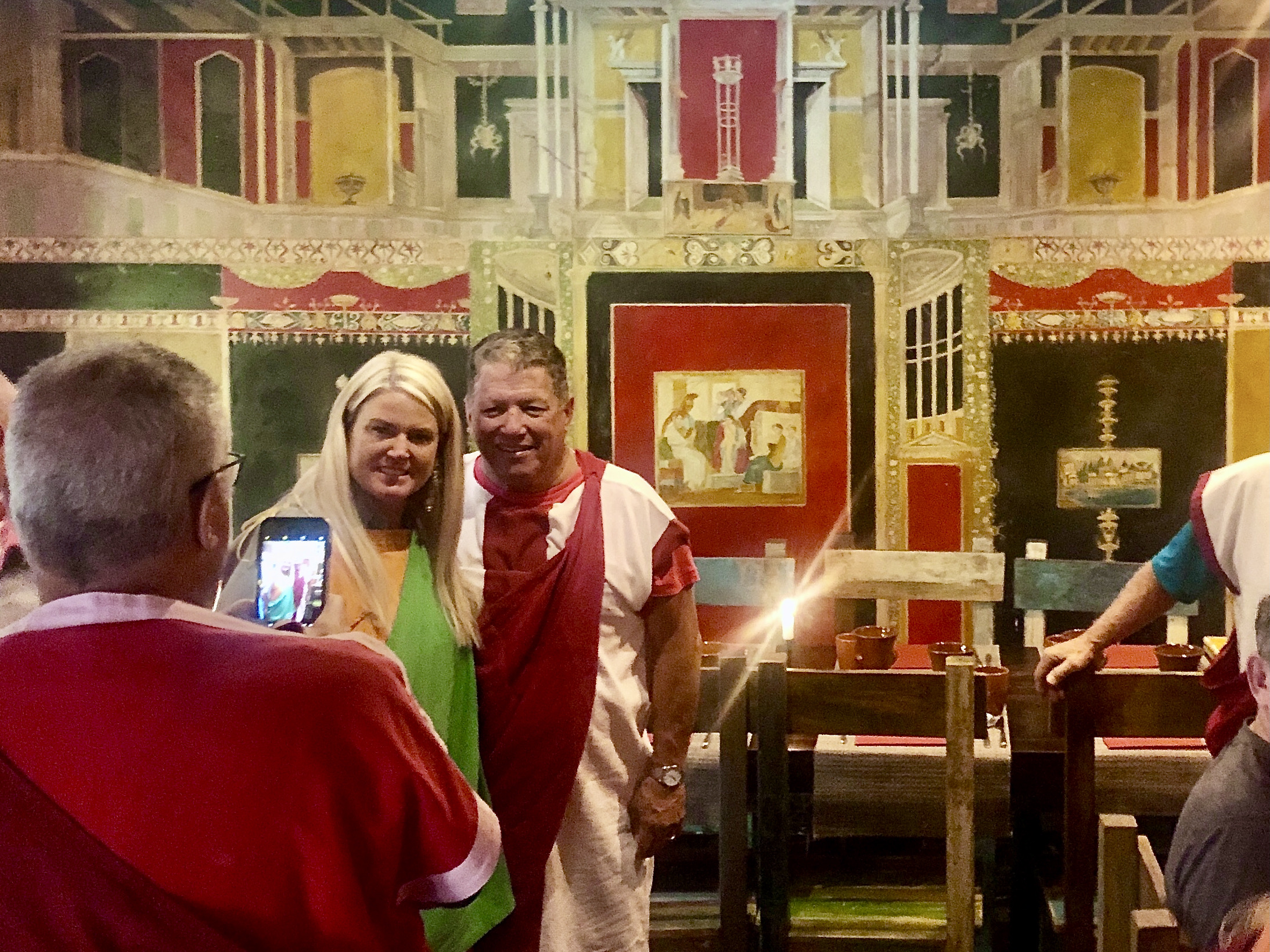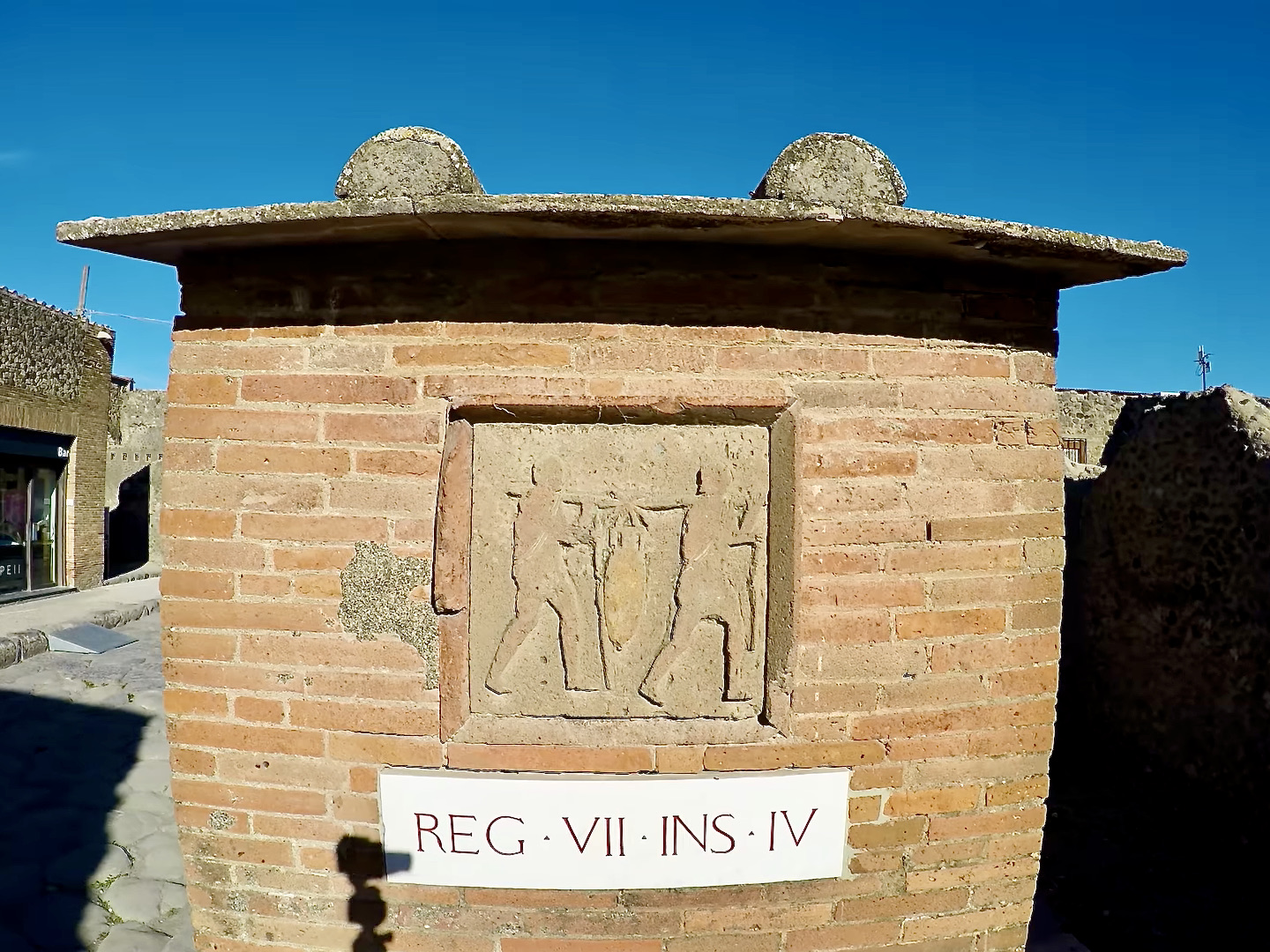Pompei Wine and Food Experience with Lunch 5 hours
- Free cancellation up to 24 hours
- Book up to 12 hours in advance
- Language: EN – IT – ES – FR – DE
- Place: Pompeii
- Duration: 5 hours
- Start time: on request
- Instant Confirmation
- Local Auhtorized Guide
- Private Experience
Meet our licensed guide nearby the main entrance of the archeological site, skip the line ticket access and start to enjoy a full day walking tour that is focused on the culinary art of the ancient romans and includes also a wine tasting and lunch with genuine food as it was prepared two thousand years ago !
You will visit the Forum, the religious, commercial and civil centre of the roman life discovering the private and public aspects of Roman life,: the Food market, the Basilica, the public Baths, taverns and bakeries, residential dwellings and private villas with wonderful frescoes and mosaic floors. Pompeii was one of the first cities to launch the concept of modern catering: numerous roadside thermopolia offered refreshments to patrons that they could eat and drink in a short time during the lunch break. The termopolium is considered the ancestor of the modern restaurant. The sources from which to draw in order to understand the eating habits of the Vesuvian city are numerous. About Pompeian cooking talk Latin writers like Apicius, Columella and Pliny. Their works offer a comprehensive idea of what should not miss in the garden and on the tables of the people of Pompeii. These sites have yielded frescoes showing convivial scenes, fingerprints of crops and charred remains of food in perfect condition. Exploring ancient Pompeian kitchen will be like visiting Pompeii again looking at it from another point of view, perhaps I should say savoring it from another point of view, that of taste! Meat, eggs and milk. These products were always present in rudimentary kitchens of the Vesuvian city. He drew fresh meat from pigs that could be preserved by smoking. During your guided tour in Pompeii, you will see several signs of workshops that promoted sausages and hams. The milk obtained from sheep and cows was an indispensable ingredient for achieving the cheese. The culinary tradition of Pompeian left us the famous recipe of fresh ricotta depicted in Pompeian frescoes. As for a typical Pompeian meat food are known meatballs, wrapped omentum, the guts of pork. On the tables of each historical period from antiquity to the present day, the wine is the preferred accompanist for dishes based on fish and meat. The Romans considered it the nectar of the gods, it was mixed with honey and citizens of Pompeii were passionate wine lovers. During the archaeological explorations in Excavations of Pompeii were found the casts of many varieties and other tidbits were planted again in the same position by the archeo-botanics.The Pompeian kept wine in amphorae into the ground, thinking of creating a cooling effect. They drank this intense red liquid lying comfortably on couches tasting occasionally the same grapes. The food culture of Pompeii has been strongly influenced by Africa and the Orient, the reason is simple. The inhabitants of this city in the province of Naples were a trading people then enrich the dishes with new flavors, spices, foods from other places was the norm. The typical dishes of Pompeii were never equal to themselves, in the kitchen the chef liked to experiment. Among the everyday foods they never failed bread. Of this were found charred remains. It was represented in frescoes and bas-reliefs, produced in ten variants based on the cooking method and the flour used. It also produced a special dog biscuit. In the city there were about 40 bakeries. Among the streets of Pompeii when Mount Vesuvius still slept blessed, the smell of warm bread woke citizens risers. When everything was still surrounded by the silence of dawn, it was not hard to hear the incessant activity of lava millstones used to work it. In addition to the bread the kitchen of Pompeii was also based on the vegetables. From the charred remains of food emerges a large consumer of cauliflower grown only in the gardens of ancient Pompeii. Considered a specialty, this food was mostly eaten raw and in large quantities because it is very light and a very good support before letting go a long drinking without the risk of a stomach ache. In the fields of Pompeii there were also: different types of lettuce, broccoli, carrots, kale and basil, also used as a medicinal herb. The asparagus were growing wild in the countryside of the city. The lava of Vesuvius has not only destroyed, it has also preserved, in fact were found charred melon seeds, beans, peas, chickpeas and lentils. One of the typical dishes of Pompeii made with vegetables was the stem of boiled cabbage: the leaves were chopped with coriander, onion, cumin, pepper, sweet or sweet cooked wine and a little oil. On the table of Pompeians fruit played a crucial role, and often was served as an appetizer or as an accompaniment to dessert at the end. Much loved figs, they were also used as a condiment for their sweet taste. The olives were grown instead on Lattari hills, collected directly from the ground, were preserved in salt or vinegar. The Pompeian made a fragrant oil. Even the fruits that were preserved by drying for the long winter: pears, rowan berries, apples and peaches that were believed to have healing power. Were widespread even walnuts, hazelnuts, almonds, pine nuts, because they are protected from the shell, some remains were discovered in the old houses of Pompeii. The dates (the most famous came from Babylon and reserved to the king of Persia) with honey were often the sweet, the dish final after a meal: once were boned stuffed with walnuts, pine nuts and pepper, salted and then fried in honey . If you close your eyes you can imagine the sweet taste of this fruit thanks to the combination with honey, but also made strong by the stuffing. An explosion of delicate and intense flavors. The fish was chosen and served cool during the symposia, destined to all social classes. Especially molluscs less valuable were reserved for slaves, the Balorde are an example. In Naples they are known as Mussels of the slaves. From the sea lapping at Pompeii were fished delicious bream, anchovies, tuna, swordfish, usually salted. Inside the domus many nymphs were transformed into murenai, among the dishes of fish regularly consumed in ancient Pompeii there’s one that still dominates the boards of Neapolitan cuisine: the fried anchovies scapece. Anchovies were fried and once removed from the fire by the skilled housewives Pompeii were seasoned with hot vinegar. Traditions live and continue even after 2000 years of history. One more thing on this point. Did you know that the blue fish typical of the Neapolitan coast was made a condiment very appreciated by the inhabitants of Pompeii? The garum, a sauce made by fermentation in salt of scrap parts of the cod.
Licensed Tour Guide, Skip the Line Ticket, Wine and Food Experience at the Roman way
- Wheelchair accessible
- Stroller / pram accessible
- Public transportation nearby
Day tour / activity
Attributes Private experience
Booking in advance 12 hour(s)
Categories: Cultural and theme tours · Walking tour
Live tour guide: EN · SP · FR · DE
Ancient food exibition in the Large Palestra, Amphitheatre, Vinyards, House of Menander, Public Baths, Thermopolium (fast food), Pistrinum (bakery), Caupona (tavern), Red light district, Forum, Food market



